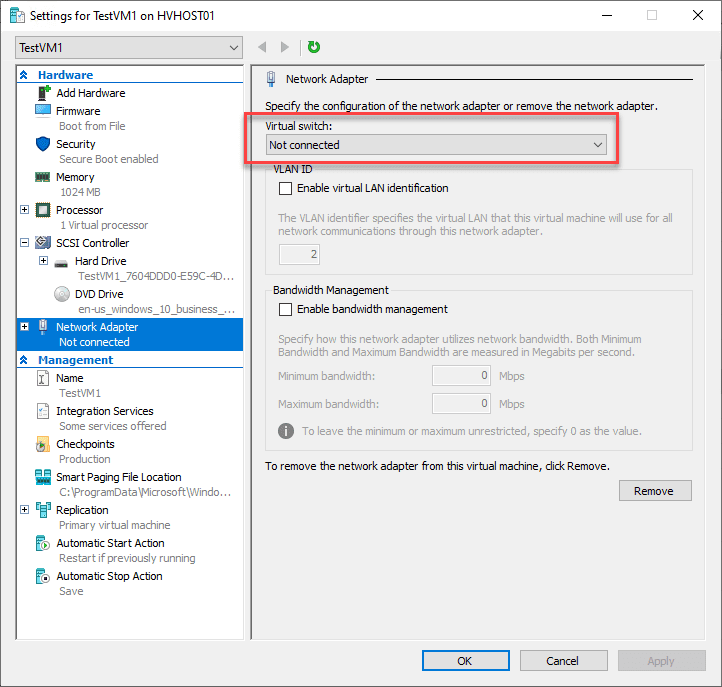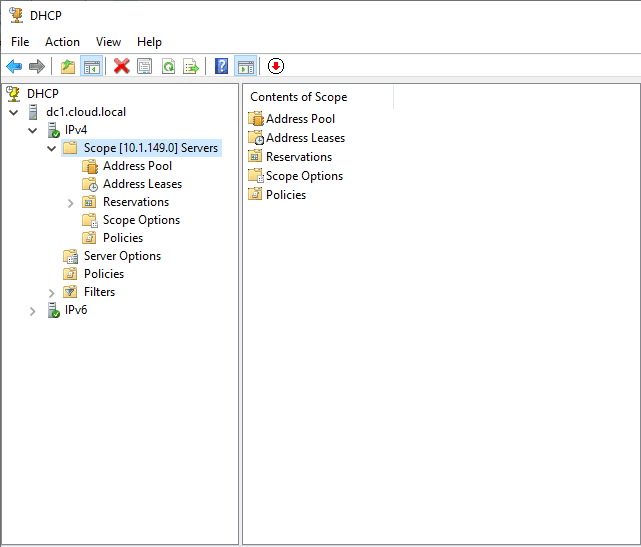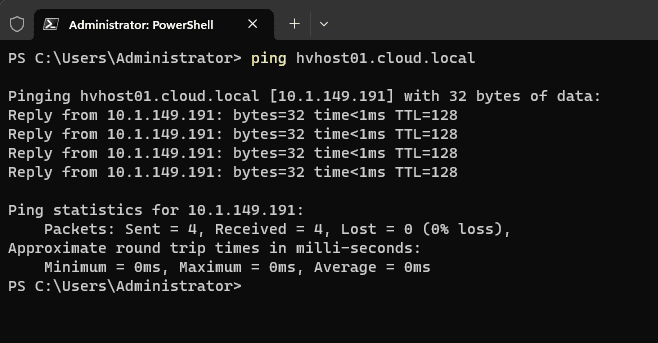Quick Bites:
- This blog provides a comprehensive troubleshooting guide for resolving issues with virtual machines (VMs) that fail to obtain an IP address in Hyper-V environments
- It covers essential steps including checking network adapter configuration, DHCP server status, network connectivity, firewall or antivirus settings, and virtual switch configuration
- Additionally, the blog highlights useful command line tools like ipconfig, ping, netsh, tracert, and nslookup for network troubleshooting
- This guide is designed to help beginners methodically diagnose and fix network connectivity issues in Hyper-V VMs
Hyper-V has powerful networking capabilities, allowing virtual machines to communicate with virtual and physical networks. While Hyper-V networking is reliable and contains many features, admins may encounter issues with virtual machines, such as a missing IP address. Let’s look at Hyper-V VM with no IP address for beginners and see how we can troubleshoot it.
Table of Contents
- What is an IP address?
- What causes a Hyper-V VM to have no IP address?
- How to Troubleshoot a Hyper-V VM with no IP address?
- Step 1: Check the network adapter configuration
- Step 2: Check the DHCP server
- Step 3: Check network connectivity
- Step 4: Check the firewall or antivirus software
- Step 5: Check the virtual switch configuration
- Command line tools to help with network troubleshooting
- Wrapping up
What is an IP address?
The IP address is a central core component of TCP/IP networking. An IP address is a unique address assigned to every node connected to a network. It allows devices to communicate with each other and is necessary for accessing the Internet. Without an IP address for basic TCP/IP connectivity, machines cannot connect to the network or access the Internet.
What causes a Hyper-V VM to have no IP address?
Several factors can cause a Hyper-V VM to have no IP address. Here are some common reasons:
- Network adapter misconfiguration – An incorrectly configured network adapter is the most common cause of a missing IP address. If the network adapter in the VM is not configured correctly, it won’t be able to connect to the network and obtain an IP address
- DHCP server issue – DHCP servers assign IP addresses to devices on the network. The VM won’t receive an IP address if the DHCP server is down or has issues
- Network connectivity issues – If there are network connectivity issues between the VM and the host machine, the VM won’t be able to communicate with the network and obtain an IP address. Incorrect VLAN configurations, router misconfiguration, etc, can lead to a lack of connectivity
- Firewall or antivirus software – Sometimes, firewall or antivirus software can block legitimate traffic, preventing the VM from connecting to the network and obtaining an IP address
- Virtual switch configuration – If the virtual switch is misconfigured, the VM may not be able to communicate correctly or in a way that is expected
How to Troubleshoot a Hyper-V VM with no IP address?
Now that we understand what can cause a Hyper-V VM to have no IP address, let’s discuss how to troubleshoot this issue. Note the following steps:
Step 1: Check the network adapter configuration
The first step is to check the network adapter configuration in the VM. Open the Hyper-V Manager and select the VM. Then, click the “Settings” button, select “Network Adapter,” and select settings. Make sure that the network adapter is connected to the correct virtual switch and that the virtual switch is configured correctly. Ensure that the “Enable virtual LAN identification” checkbox is unchecked if your network does not use VLANs. Below, the virtual machine is not properly connected to a virtual switch.

Step 2: Check the DHCP server
If the network adapter configuration is correct, the next step is to check the DHCP server. Ensure the DHCP service is running and the address pool has IP addresses available. If there are no available IP addresses in the DHCP pool, release any leased IP addresses that are no longer in use. Also, ensure you can ping the DHCP server by manually assigning an IP address in the appropriate range.

Step 3: Check network connectivity
If the DHCP server is not having issues, the next step is to check network connectivity between the VM and the host machine. Note if the host machine is having connectivity issues or only the guest virtual machine. Try pinging the host machine from the VM and vice versa. If the host can ping physical or virtual devices across the network, there is most likely not a layer 1 physical issue with the network.

Step 4: Check the firewall or antivirus software
Check your firewall settings or antivirus software on the host machine. You can temporarily disable any firewall or antivirus software as a quick test to see if the VM can obtain an IP address afterward. If it can, then the firewall or antivirus software is the likely culprit, and you need to configure exceptions allowing the VM to connect to the network.

Step 5: Check the virtual switch configuration
If none of the previous steps resolved the issue, the last step is to check the virtual switch configuration. First, go to the Hyper-V Manager and select the virtual switch in question. Then, check the settings to ensure it is configured correctly, such as the connection type, VLAN identification, and bandwidth management.
Command line tools to help with network troubleshooting
In addition to the troubleshooting steps outlined in the previous section, you can use several command line tools to help diagnose and resolve issues with Hyper-V VMs. Here are some of the most useful command line tools:
- Ipconfig – The Ipconfig command in Windows is a great way to quickly view the IP address settings configured for a host, including Hyper-V hosts and guest virtual machines. You can release and renew your IP address with the ipconfig /release and ipconfig /renew commands. You can also flush your DNS settings with ipconfig /flushdns which can be helpful with name resolution issues
- Ping – Ping is one of the most basic network connectivity tests that transcends OS platform, architecture, and troubleshooting scenarios. It is one of the first commands that admins will likely run to test basic network connectivity
- Netsh – Netsh is a command line tool that allows you to configure and diagnose network settings and troubleshoot issues with the VM’s virtual switch or network adapter. Open a command prompt in the VM and type “netsh” at the prompt
- Tracert – Tracert is a command line tool that traces the route that packets take between two devices on a network. It is a great tool when routing issues are suspected or to flush out any issues related to layer 3 boundaries. The tracert output will show you the hops taken between the VM and the destination
- Nslookup – When troubleshooting name resolution issues in physical and virtual environments, nslookup is a great command to help investigate DNS issues. Using nslookup, you can determine which DNS server is used for resolving a specific domain
Wrapping up
When you encounter the Hyper-V no IP address issue in a guest virtual machine, it can be challenging to find the underlying reason. However, systematic troubleshooting and working your way through the OSI layer stack in testing can help shortcut the process of pinpointing the connectivity issue.
Read More:
Troubleshooting Hyper-V with Event Logs
Hyper-V Live Migration Part 2 – Troubleshooting and Best Practices
Beginners’ Guide for Microsoft Hyper-V: Installing Hyper-V in VMware vSphere – Part-59
Hyper-V Mastery: A Step-by-Step Guide for Beginners to Elevate Your IT Skills and Boost Your Career
Follow our Twitter and Facebook feeds for new releases, updates, insightful posts and more.



Leave A Comment